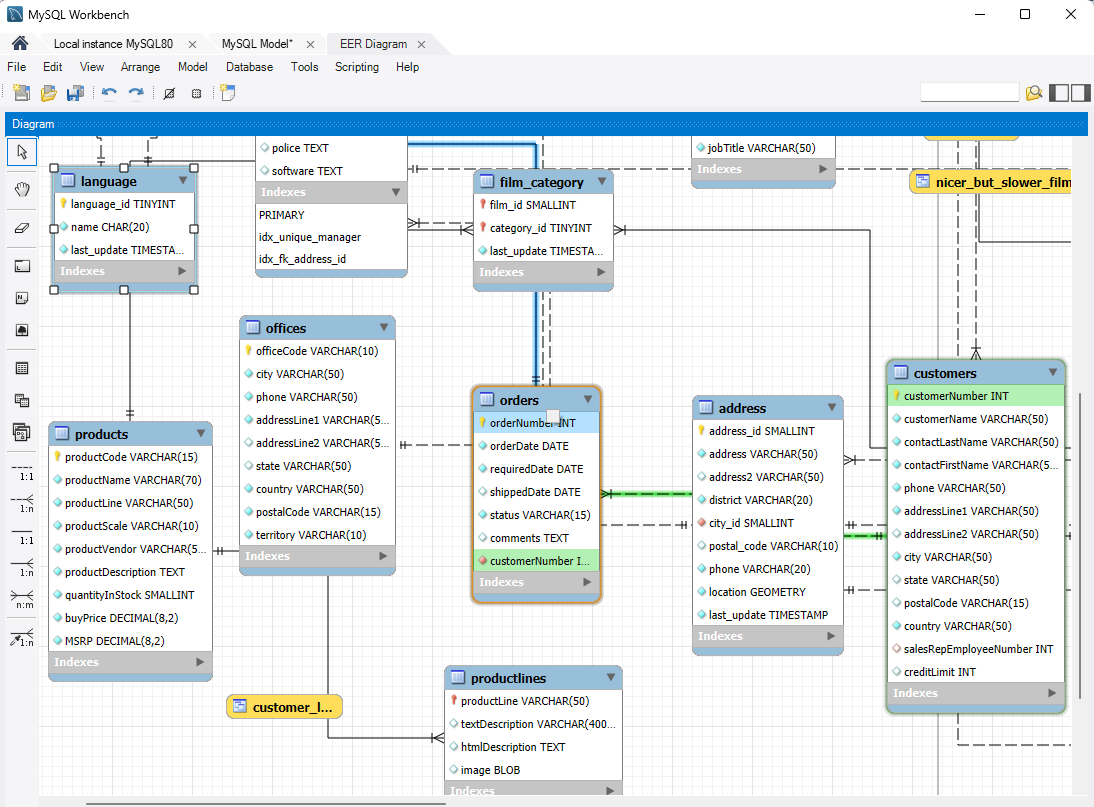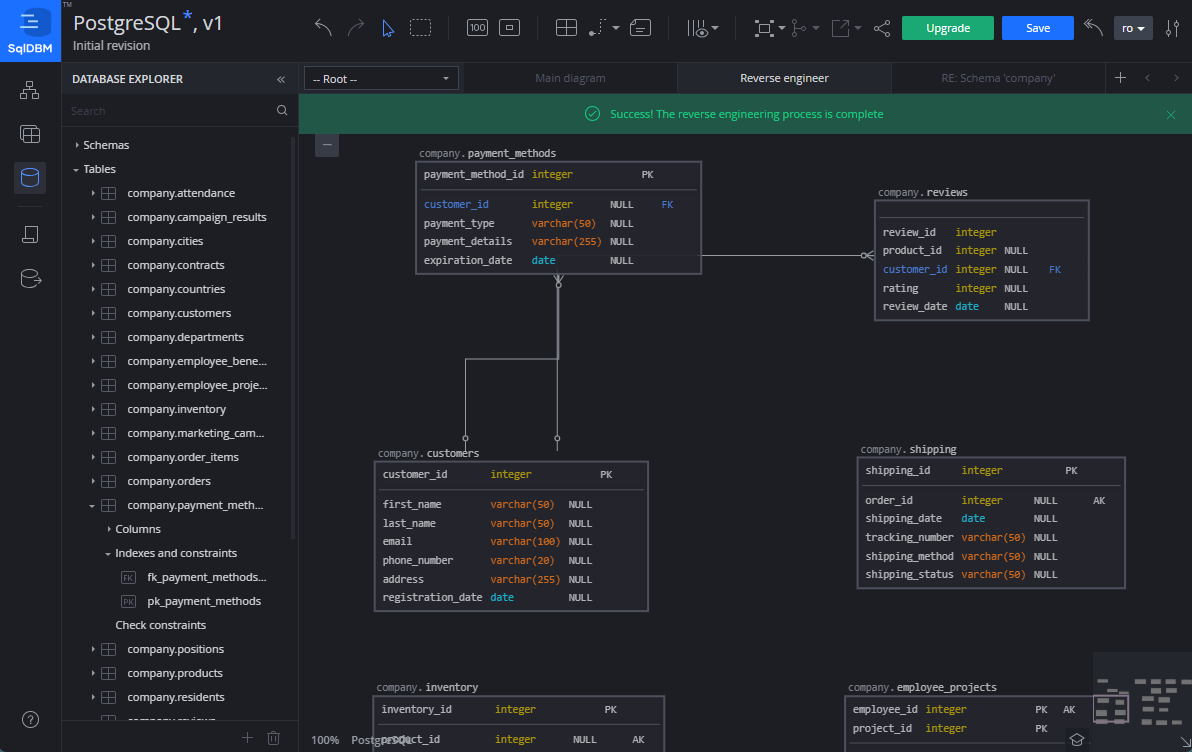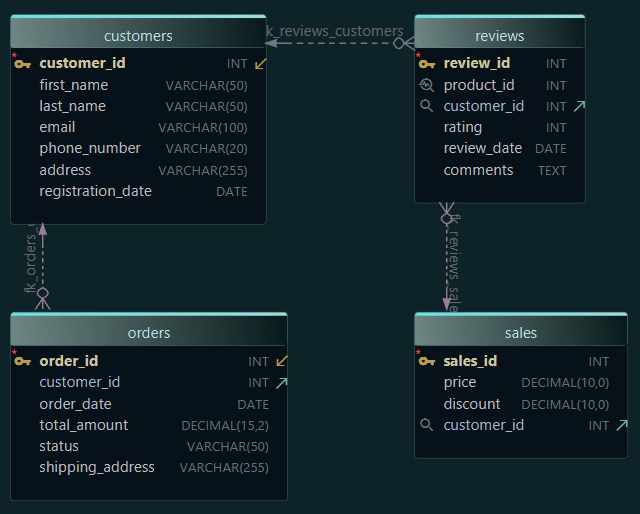The Best Tools to Design Database Schemas Visually in 2025

If you’ve worked with databases, you’ve probably run into messy, confusing schemas-tables with unclear names and no idea how things connect. I’ve been there too.
That’s why I started looking into visual tools that can help organize and explain your database structure more clearly.
Over the past few months, I tested several database design tools to see which ones are actually useful, whether you're designing schemas, working in a team, or just trying to keep your documentation in order.
Tools Compared in This Article
- DbSchema
- DBeaver
- DataGrip
- dbForge Studio
- Vertabelo
- MySQL Workbench
- Navicat
- Toad Edge
- SQLDBM
- HeidiSQL
Why are visual database tools useful
Schemas are growing in size and complexity. With multiple people working on the same project, sometimes in different time zones - it’s become essential to:
- Sketch out the structure before setting up the actual database
- Share changes with teammates using Git, so nothing gets lost
- Keep your diagrams and documentation in sync with the live schema
- Compare different versions of the same database to catch differences
- Create mock data to test your application properly
- Reduce the time spent writing repetitive SQL or deployment scripts
Here’s what I found after spending time with ten of the most popular tools:
1. DbSchema
- Platform: Desktop (Windows, macOS, Linux)
- Editions: Free trial available, paid Pro version (with 30-day trial version)
- Get the App: Free Download
DbSchema caught my attention quickly. It’s one of the few tools that lets you work on your schema without needing a database connection right away. That’s huge if you're working on a new project. It also creates interactive HTML documentation and has Git support built-in, which makes it ideal for teams.
- SQL and NoSQL support, more than 80 databases
- Visual schema diagrams with multiple layouts
- Works offline
- Git version control for schema files
- Generates sample data
- Produces shareable, interactive documentation
- Allows automation with scripts
My favourite features from DbSchema are the ability to generate interactive documentation as HTML5 or SVG, and the Data Browser, which helps you find related data easily. Read more about this here.
2. DBeaver
- Platform: Desktop (Windows, macOS, Linux)
- Editions: Free Community Edition, paid Enterprise version (with 14-day trial version)
- Get the App: Free Download
DBeaver is open-source and supports a long list of databases. It’s more of an all-purpose database tool, but it does include a diagram view that’s useful when you're connected to a live database. It’s not focused on design-first work, but for exploring and editing real data, it’s hard to beat.
- Good ERD viewer
- Connects to many database systems
- Useful SQL editor
- Simple schema comparison
- Intuitive UI for browsing and editing
- Offers support for a lot of databases, more than 70.
You have to do a lot of things to get your trial license. You need to download DBeaver, request the license by email, wait for a confirmation link, open that link, log into your account, find the license, and finally paste it into the DBeaver app. Meh...
3. DataGrip
- Platform: Desktop (Windows, macOS, Linux)
- Editions: Paid only (free trial available)
- Get the App: Free Download
JetBrains is known for great developer tools, and DataGrip follows that tradition. It's aimed squarely at developers who spend a lot of time writing and refactoring SQL. You get smart suggestions, warnings, and all the IDE-level goodies. Just know that it's better for working with existing databases than designing new ones from scratch.
- Smart autocomplete and refactoring for SQL
- Diagram view for connected databases
- Support for many SQL engines
- File-based version control support
- Built-in database inspection tools
Let’s be honest - everyone knows JetBrains makes great tools. DataGrip is no exception. But if you want more features like database refactoring inside your project or cross-language integration, you’ll usually need to buy multiple IDEs from their full suite.
4. dbForge Studio
- Platform: Desktop (Windows only)
- Editions: Paid (with 30-day trial version)
- Get the App: Free Download
dbForge Studio feels like it was built for serious SQL development. It has solid diagramming tools, comparison features, and a wide range of automation options. It supports multiple platforms, though it feels most at home with SQL Server and MySQL.
- Diagram-based schema editor (only for MySQL and SQL Server)
- Data generation features
- Schema diff and deployment tools
- Query profiler
- Code templates and formatting tools
It has a minus from my side because it doesn't support an ERD diagram for PostgreSQL.
5. Vertabelo
- Platform: Web-based
- Editions: Free plan for students, paid plans for professionals and teams
- WebApp: Link here
Vertabelo is browser-based and focuses on clean design and early planning. You can map out your schema, define relationships, and generate SQL for multiple engines. It’s a good option if you’re in the planning phase or working with a distributed team.
- Logical and physical design views
- Built-in version tracking
- Multi-user commenting and collaboration
- Exports SQL scripts
- Covers most common database platforms
I like the fact that you can start from scratch and create a logical design with this tool.
6. MySQL Workbench
- Platform: Desktop (Windows, macOS, Linux)
- Editions: Free
- Get the App: Free Download
This is the go-to tool for MySQL users. It includes a visual modeling environment, as well as performance and administration tools. If you’re focused purely on MySQL or MariaDB, this one gives you all the essentials.
- Schema diagramming and export
- Forward and reverse engineering
- Query execution and analysis
- Table relationship mapping
- Basic documentation tools
MySQL Workbench is solid if you're working strictly with MySQL or MariaDB, but unfortunately, that’s all it supports; no multi-database flexibility here.
7. Navicat
- Platform: Desktop (Windows, macOS, Linux)
- Editions: Paid only (trial available)
- Get the App: Free Download
Navicat feels polished and powerful. It’s built to work across different databases and includes everything from visual modeling to job scheduling. There’s a focus on reliability and cross-platform support, which makes it a solid choice for teams.
- Visual ERD creation
- Data sync and comparison
- Automation and scripting options
- Cloud integration for team workflows
- Supports many SQL databases, around 25.
Creating a diagram in Navicat isn’t as straightforward as in some other tools; you have to go through the Model feature and a few setup steps. It might feel confusing at first, but with decent documentation, it becomes manageable.
8. Toad Edge
- Platform: Desktop (Windows and macOS)
- Editions: Paid (trial available)
- Get the App: Free Download
Toad Edge is designed for developers working with MySQL and PostgreSQL. It handles the essentials well: from editing SQL to comparing schemas and exporting data. However, it does not include any ER diagram functionality, which may be a limitation if you're looking to visualize relationships between tables. If diagrams are important to your workflow, you’ll need to install Toad Data Modeler, which is a separate tool from Quest Software.
-
MySQL and PostgreSQL support
-
Clean SQL editor with code completion
-
Schema diff and synchronization tools
-
Export options to common formats
Toad Edge feels lightweight and solid for basic tasks, but the lack of ER diagrams surprised me. For full schema design, you're expected to install and use Toad Data Modeler alongside it.
9. SQLDBM
- Platform: Web-based
- Editions: Free plan with limited features, paid plans for full access
- WebApp: Link here
SQLDBM is a clean, modern tool you can run in your browser. It’s good for visualizing schemas, and the collaboration features make it useful for teams that don’t sit in the same room. It’s easy to share designs and stay aligned.
- It can reverse engineer your database, if you have a .sql file or a script.
- Visual design with SQL export
- Online team collaboration
- GitHub integration
- Logical and physical design support
- Version tracking and comment threads
SQLDBM is clean and easy to use right in the browser, which I really liked. But some features, like team collaboration or full export options, are locked behind the paid plans, so you hit a wall pretty fast on the free tier.
10. HeidiSQL
- Platform: Desktop (Windows only, unofficial support via Wine on macOS/Linux)
- Editions: Free and open-source
- Get the App: Free Download
HeidiSQL keeps things simple. It’s great when you want to connect to a database, explore the tables, and maybe run some quick queries. It has a basic visual interface, but it’s really made for speed and lightweight tasks.
- Fast and easy to launch
- Shows foreign keys in the table editor (no ER diagram)
- SQL query runner
- Table editor with filtering
- Supports MariaDB, MySQL, SQL Server, and PostgreSQL
Even though it has an outdated interface and fewer features, the fact that it's completely free and still useful for important tasks earns it the 10th spot in this article.
Final thoughts
Each tool on this list brings something valuable, depending on what you need. If you're working with existing databases and want quick access to data and structure, DBeaver or Navicat are reliable and flexible. If your focus is writing and debugging SQL day in and day out, DataGrip offers a top-tier editor with smart features.
For teams that need visual design, schema documentation, Git integration, or the ability to work offline, DbSchema really stands out. It's especially useful when you're designing from scratch, maintaining complex systems, or need to share interactive documentation across teams.
At the end of the day, it's not about finding the “best” tool, it's about picking the one that fits how you and your team work.
You can try DbSchema here: Download DbSchema





































